An Artificial Intelligence Home Monitoring System That Uses CNN and LSTM and Is Based on the Android Studio Development Platform
Abstract
1. Introduction
2. System Architecture
2.1. Zigbee Communication Protocol
2.2. MQTT Communication Protocol
2.3. K-Nearest Neighbor Algorithm
2.4. CNN and LSTM Models
2.5. Home Monitoring System
3. System Implementation and Verification
3.1. Data Restoration Using the KNN Algorithm
3.2. Automatic Equipment Control
3.3. Mobile App Function
3.4. Temperature Prediction Using the CNN and LSTM Models
4. Conclusions
Author Contributions
Funding
Institutional Review Board Statement
Informed Consent Statement
Data Availability Statement
Acknowledgments
Conflicts of Interest
References
- Baker, S.; Xiang, W. Artificial intelligence of things for smarter healthcare: A survey of advancements, challenges, and opportunities. IEEE Commun. Surv. Tutor. 2023, 25, 1261–1293. [Google Scholar] [CrossRef]
- Abdmezie, M.R.; Tandjaoui, D.; Romdhani, I. Architecting the internet of things: State of the art. Robot. Sens. Clouds 2015, 36, 55–75. [Google Scholar]
- Chen, L.B.; Liu, Y.H.; Huang, X.R.; Chen, W.H.; Wang, W.C. Design and implementation of a smart seawater aquarium system based on artificial intelligence of things technology. IEEE Sens. J. 2022, 22, 19908–19918. [Google Scholar] [CrossRef]
- Yu, L.; Lin, Y.; Xu, H.; Yang, J.; Zhao, G. Research on the Design of Indoor Air Quality Monitoring System Based on Cloud–Side–End Collaboration. In Proceedings of the 5th International Conference on Computer Engineering and Application (ICCEA), Hangzhou, China, 12–14 April 2024. [Google Scholar]
- Nugur, A.; Pipattanasomporn, M.; Kuzlu, M.; Rahman, S. Design and development of an IoT gateway for smart building applications. IEEE Internet Things J. 2019, 6, 9020–9029. [Google Scholar] [CrossRef]
- Venkatesh, K.; Barmada, B.; Liesaputra, V.; Prado, G.R. Resilient Activities Tracking in a Smart Home Using Ultrasonic Sensors. In Proceedings of the IEEE International Conference on Big Data (Big Data), Los Angeles, CA, USA, 9–12 December 2019. [Google Scholar]
- Zhang, C.; Zhang, M.; Su, Y.; Wang, W. Smart Home Design Based on ZigBee Wireless Sensor Network. In Proceedings of the 7th International Conference on Communications and Networking in China, Kunming, China, 8–10 August 2012. [Google Scholar]
- Lee, S.; Kim, H.; Hong, D.; Ju, H. Correlation Analysis of MQTT Loss and Delay According to QoS Level. In Proceedings of the International Conference on Information Networking 2013 (ICOIN), Bangkok, Thailand, 28–30 January 2013. [Google Scholar]
- Spinsante, S.; Ciattaglia, G.; Campo, A.D.; Perla, D.; Pigini, D.; Cancellieri, G. A LoRa Enabled Building Automation Architecture Based on MQTT. In Proceedings of the AEIT International Annual Conference, Cagliari, Italy, 20–22 September 2017. [Google Scholar]
- Chethana, C. Prediction of Heart Disease Using Different KNN Classifier. In Proceedings of the 5th International Conference on Intelligent Computing and Control Systems (ICICCS), Madural, India, 6–8 May 2021. [Google Scholar]
- Ramapatruni, S.; Narayanan, S.N.; Mittal, S.; Joshi, A.; Joshi, K. Anomaly Detection Models for Smart Home Security. In Proceedings of the 5th International Conference on Big Data Security on Cloud, Washington, DC, USA, 27–29 May 2019. [Google Scholar]
- Kreuzer, D.; Munz, M.; Schlüter, S. Short–term temperature forecasts using a convolutional neural network—An application to different weather stations in Germany. Mach. Learn. Appl. 2020, 2, 100007. [Google Scholar] [CrossRef]
- Wu, T.; Liu, C.; He, C. Prediction of regional temperature change trend based on LSTM algorithm. In Proceedings of the 4th Information Technology, Networking, Electronic and Automation Control Conference (ITNEC), Chongqing, China, 12–14 June 2020. [Google Scholar]
- Nahid, F.A.; Ongsakul, W.; Manjiparambil, N.M. Very Short Term Wind Speed Forecasting Using Convolutional Long Short Term Memory Recurrent Neural Network. In Proceedings of the International Conference and Utility Exhibition on Energy, Environment and Climate Change (ICUE), Pattaya, Thailand, 20–22 October 2020. [Google Scholar]
- Patro, S.P.; Patel, P.; Senapaty, M.K.; Padhy, N.; Sah, R.D. Smart Home Automation System Using Arduino Microcontrollers. In Proceedings of the International Conference on Automation, Quality and Testing, Robotics (AQTR), Cluj–Napoca, Romania, 21–23 May 2020. [Google Scholar]
- Lekić, M.; Gardašević, G. IoT Sensor Integration to Node–RED Platform. In Proceedings of the 17th International Symposium INFOTEH–JAHORINA (INFOTEH), East Sarajevo, Bosnia and Herzegovina, 21–23 March 2018. [Google Scholar]
- Wang, C.; Ren, B.; Li, X.; Chen, L. A CNN–BiLSTM and KNN Based Missing Data Imputation for Wind Power Generation Forecasting. In Proceedings of the IEEE 6th International Electrical and Energy Conference (CIEEC), Hefei, China, 12–14 May 2023. [Google Scholar]
- Song, J.; Xue, G.; Ma, Y.; Li, H.; Pan, Y.; Hao, Z. An indoor temperature prediction framework based on hierarchical attention gated recurrent unit model for energy efficient buildings. IEEE Access 2019, 2019, 157268–157283. [Google Scholar] [CrossRef]
- Li, C.; Zhang, Y.; Zhao, G. Deep Learning with Long Short–Term Memory Networks for Air Temperature Predictions. In Proceedings of the International Conference on Artificial Intelligence and Advanced Manufacturing (AIAM), Dublin, Ireland, 16–18 October 2019. [Google Scholar]
- Yang, J.; Chen, H.; Lin, S.; Chen, L.; Chen, Y. Prediction of Temperature Change with Multi–Dimensional Environmental Characteristic Based on CNN–LSTM–ATTENTION Model. In Proceedings of the 10th Joint International Information Technology and Artificial Intelligence Conference (ITAIC), Chongqing, China, 17–19 June 2022. [Google Scholar]
- Ramanujam, E.; Sharma, A.; Hussian, J.J.; Perumal, T. Improving Indoor Occupancy Estimation Using a Hybrid CNN–LSTM Approach. In Proceedings of the International Conference on Intelligent Controller and Computing for Smart Power (ICICCSP), Hyderabad, India, 21–23 July 2022. [Google Scholar]
- Ngamakeur, K.; Yongchareon, S.; Yu, J.; Sheng, Q.Z. Deep CNN–LSTM network for indoor location estimation using analog signals of passive infrared sensors. IEEE Internet Things J. 2022, 9, 22582–22594. [Google Scholar] [CrossRef]
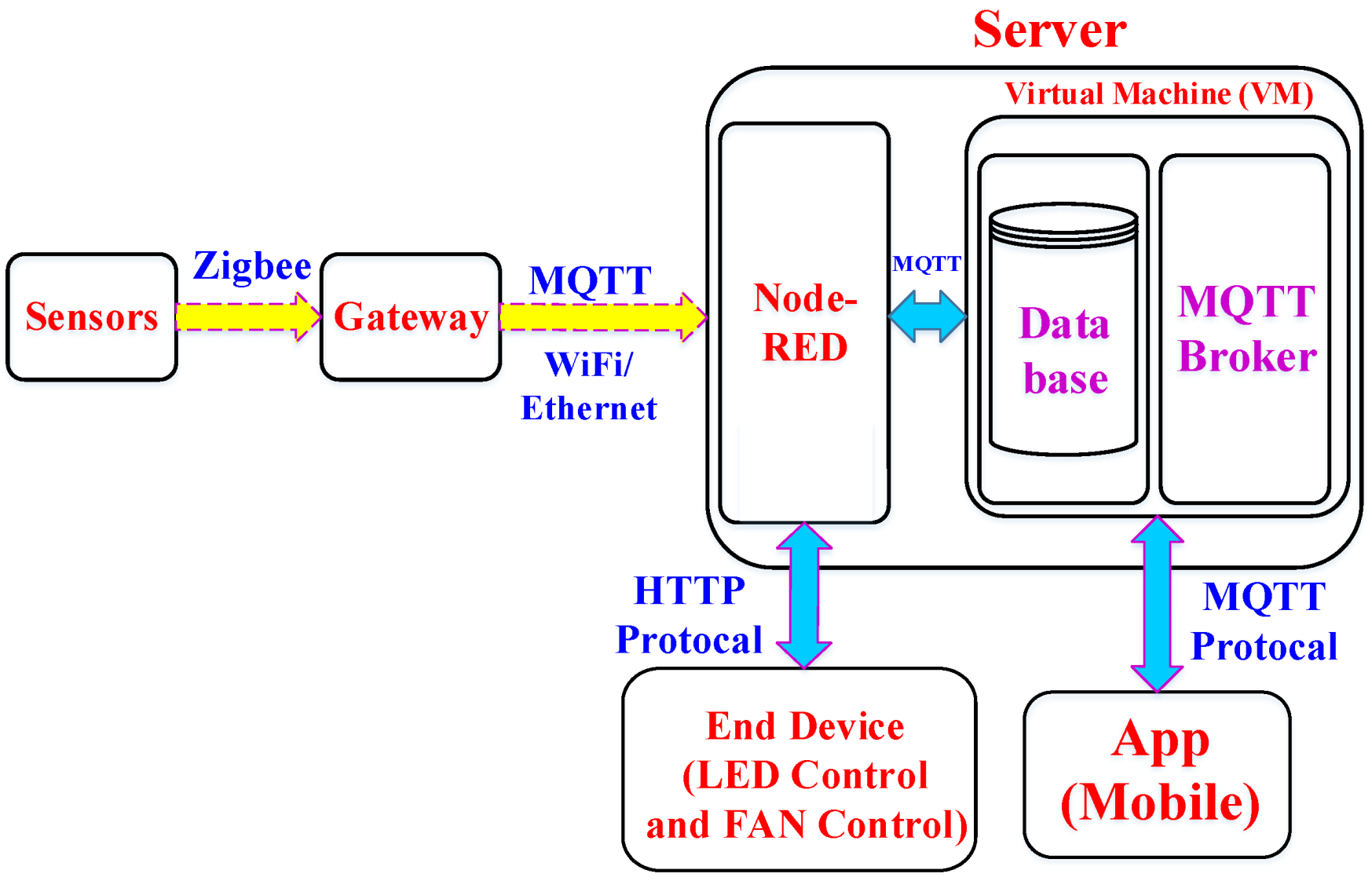
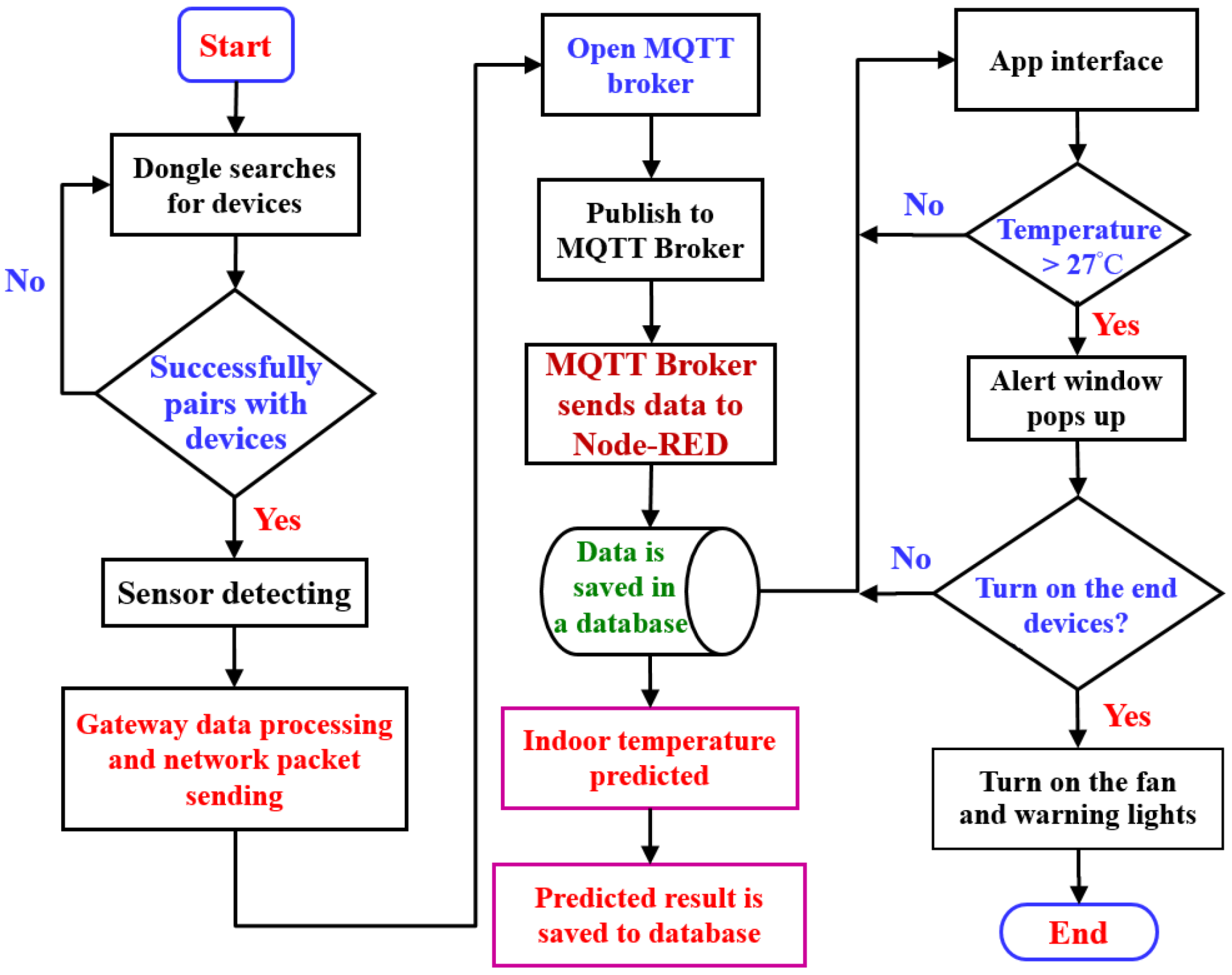
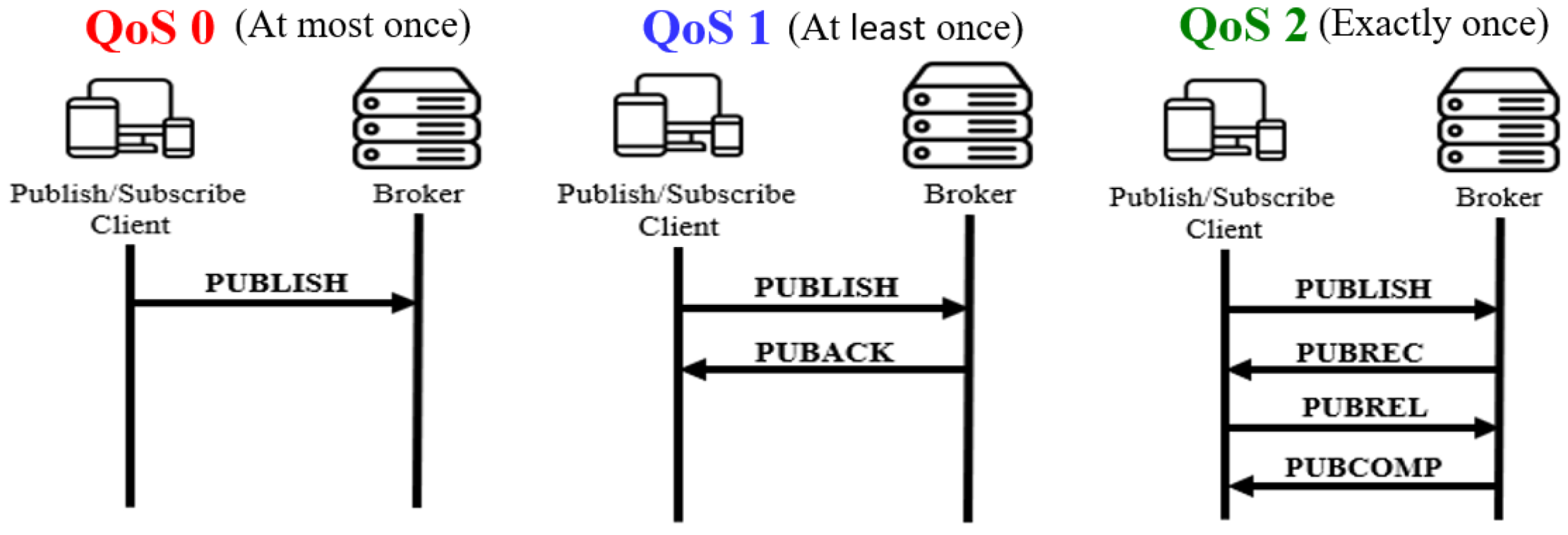
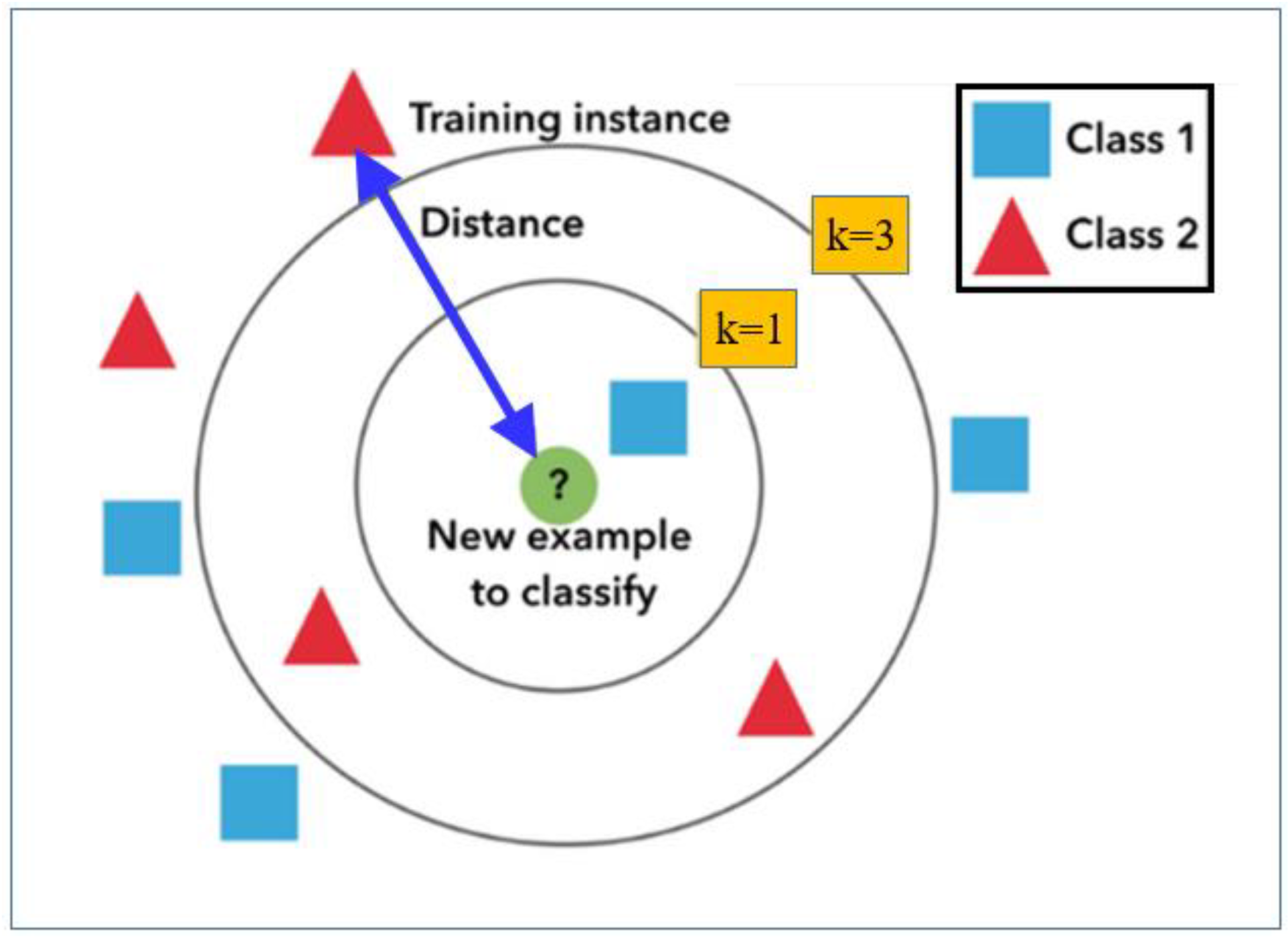
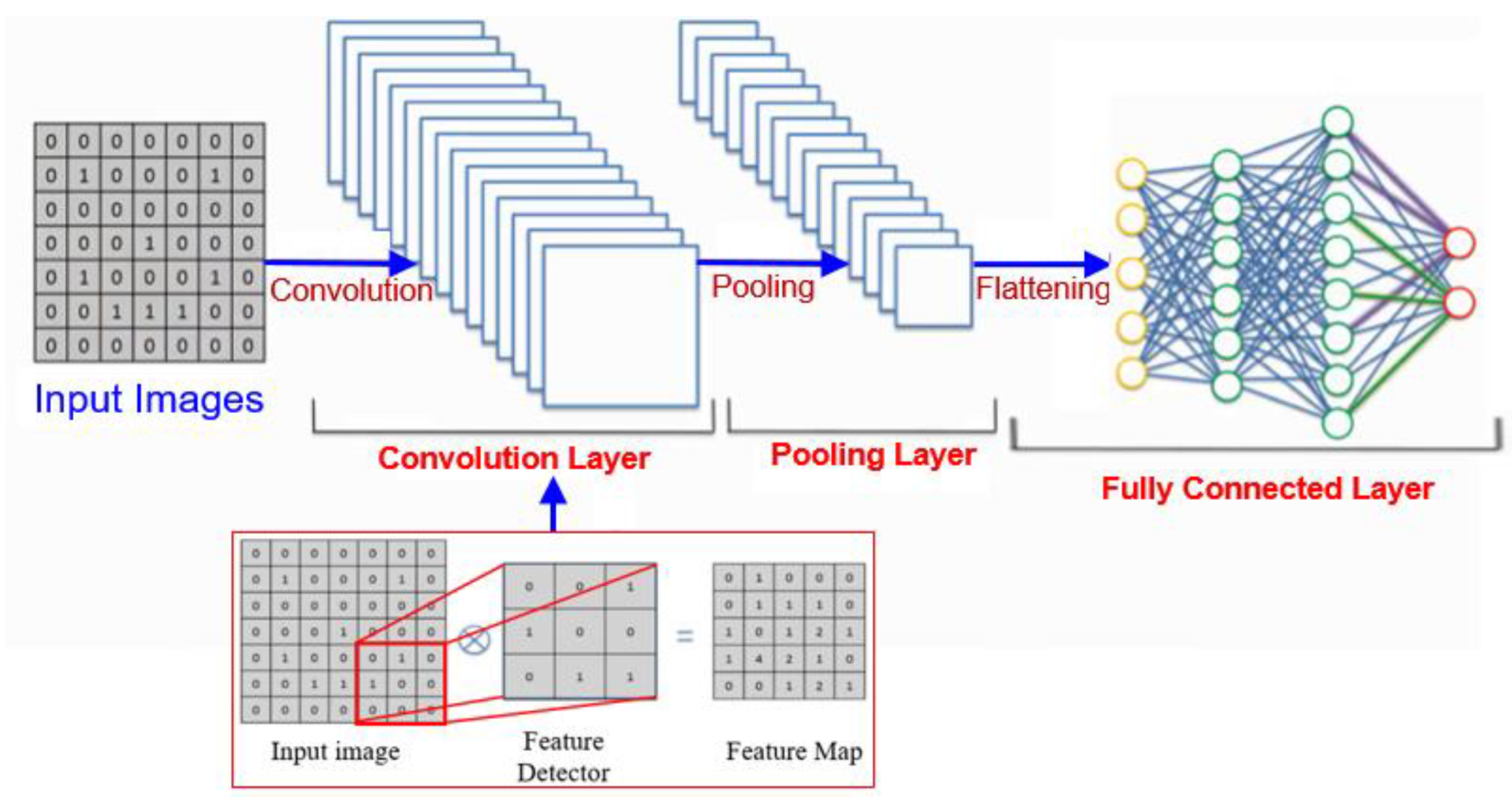


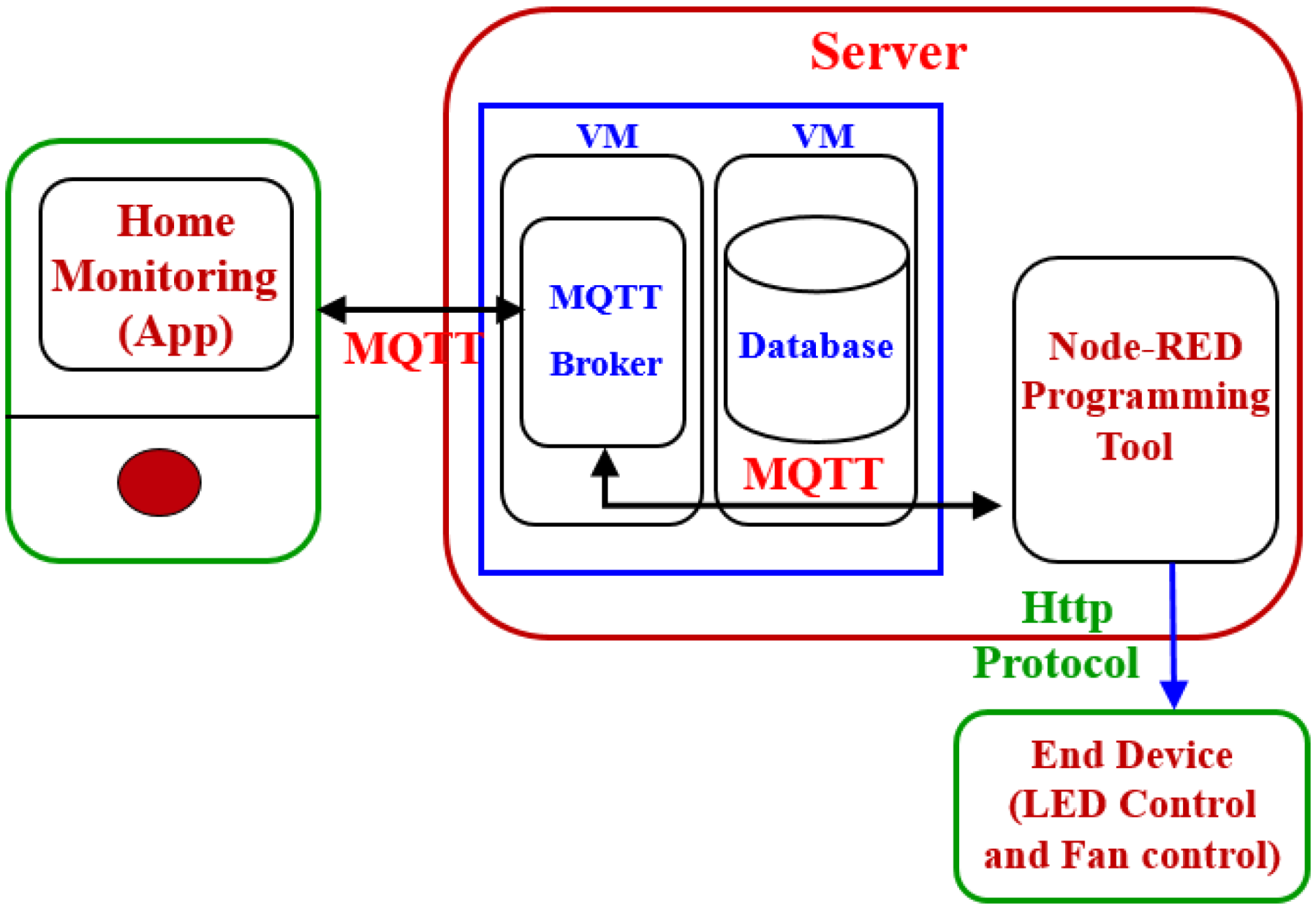
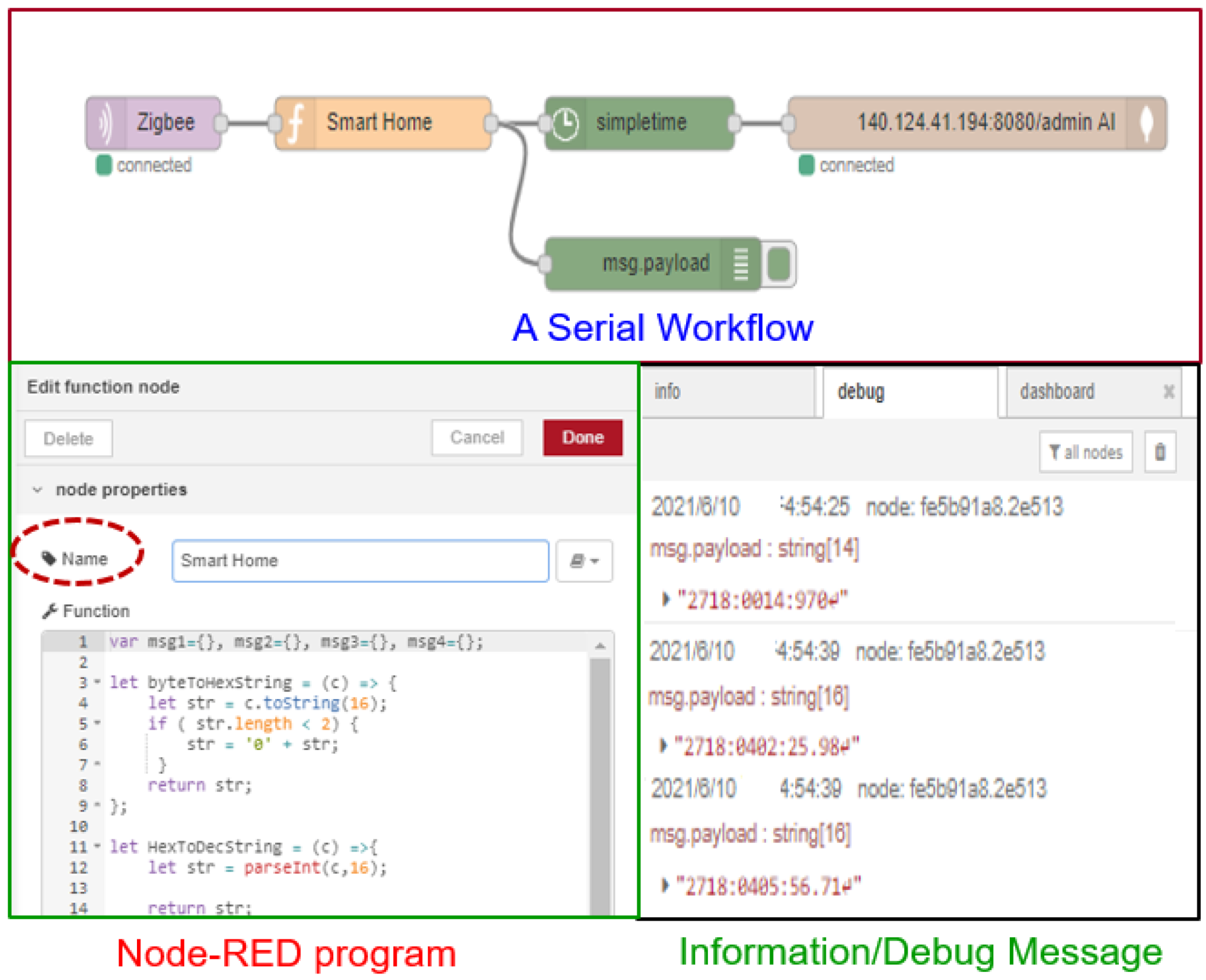
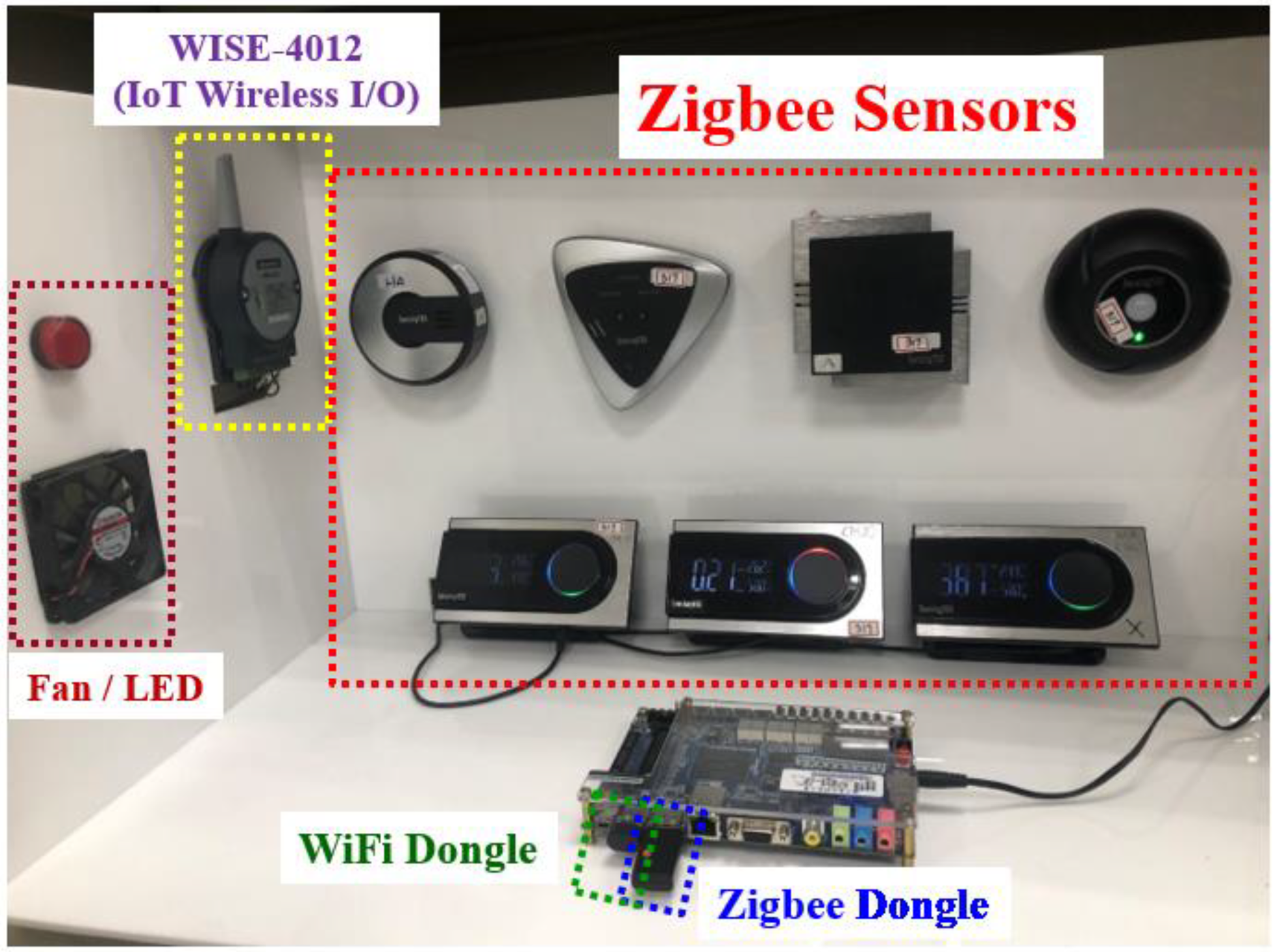
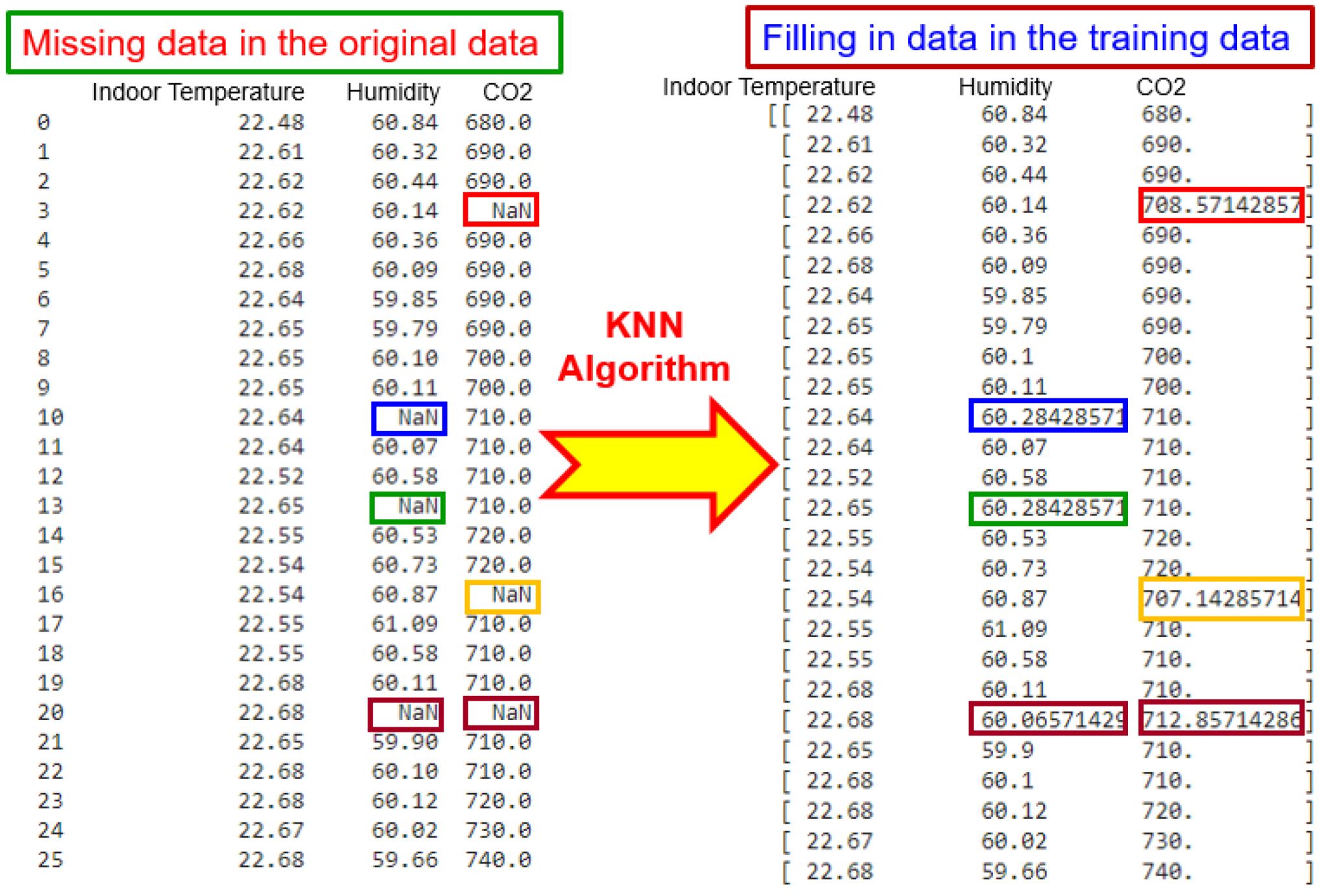


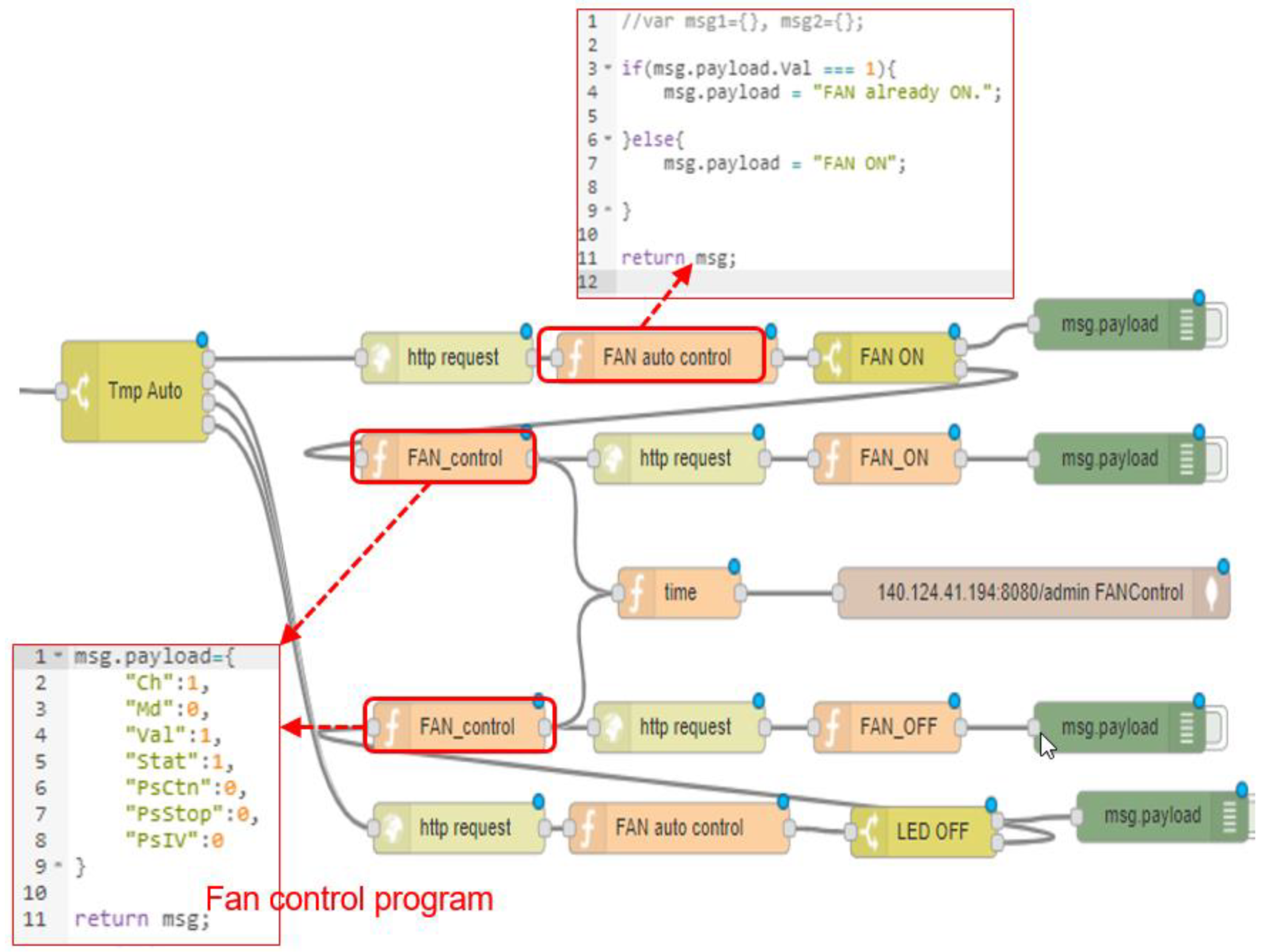
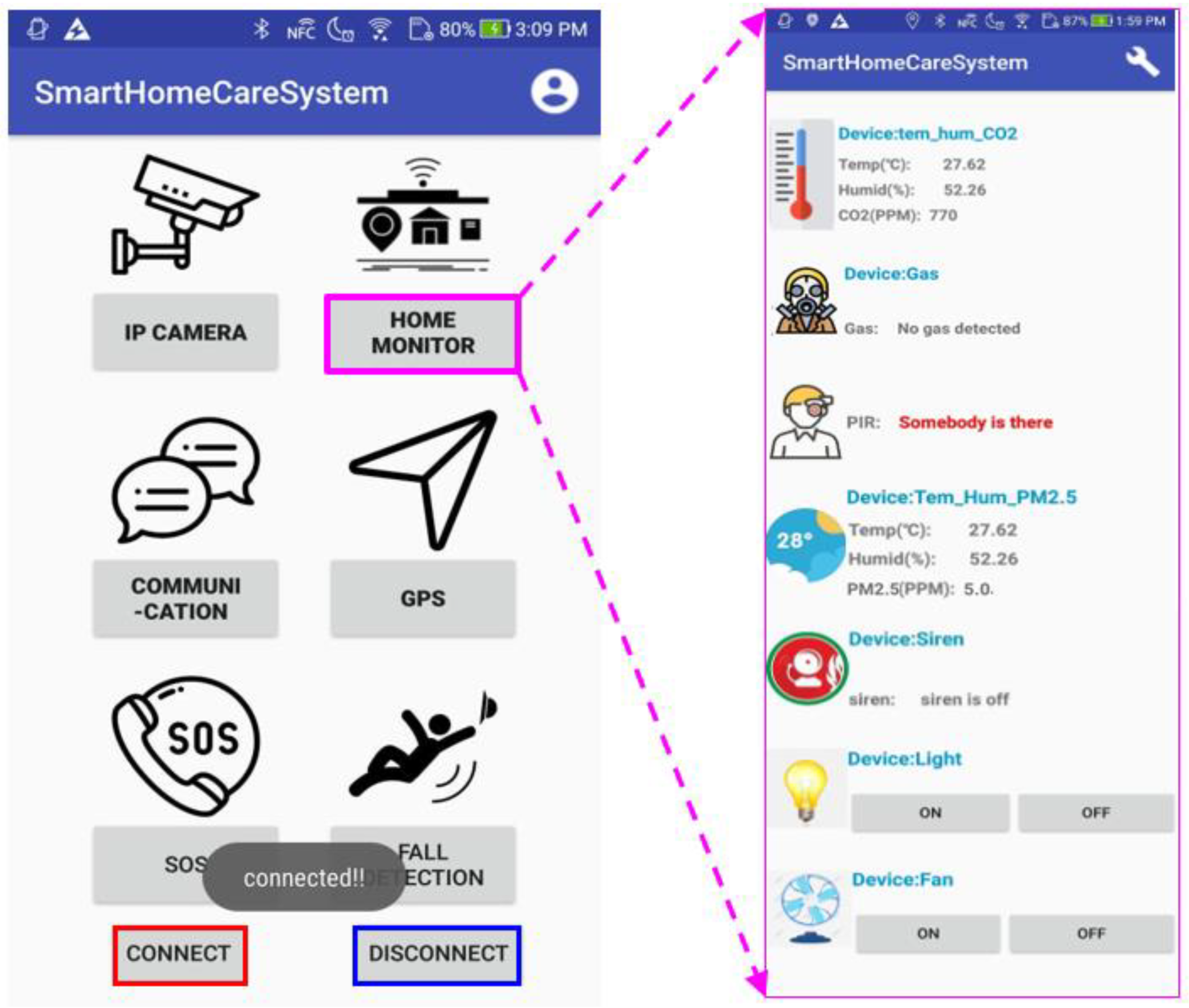
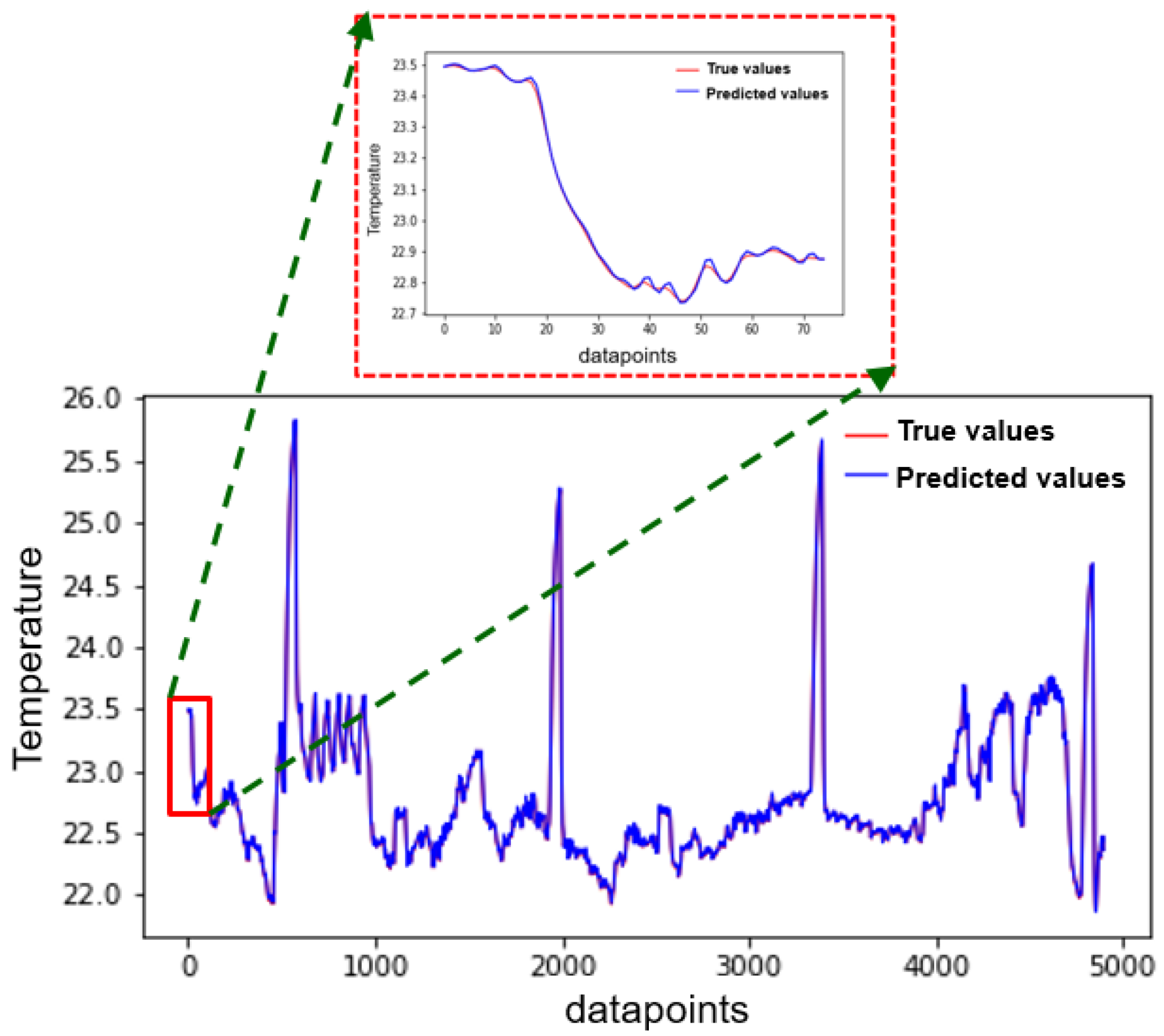
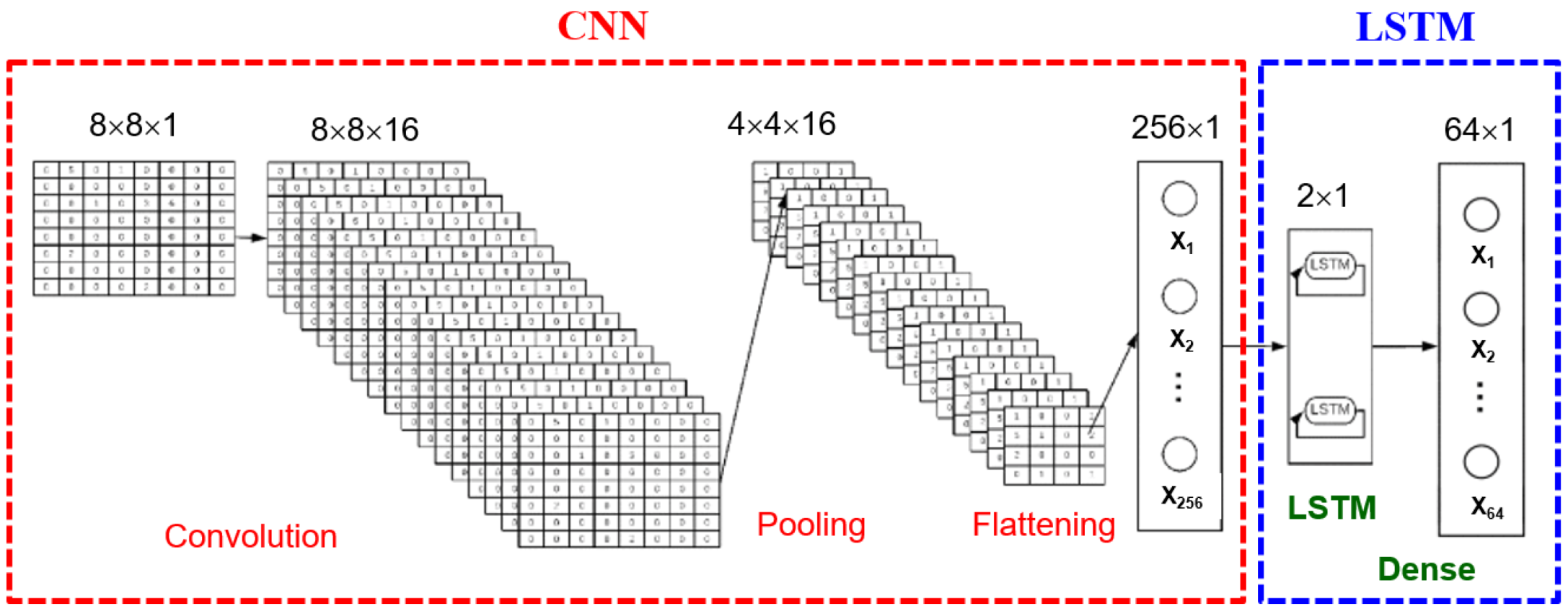
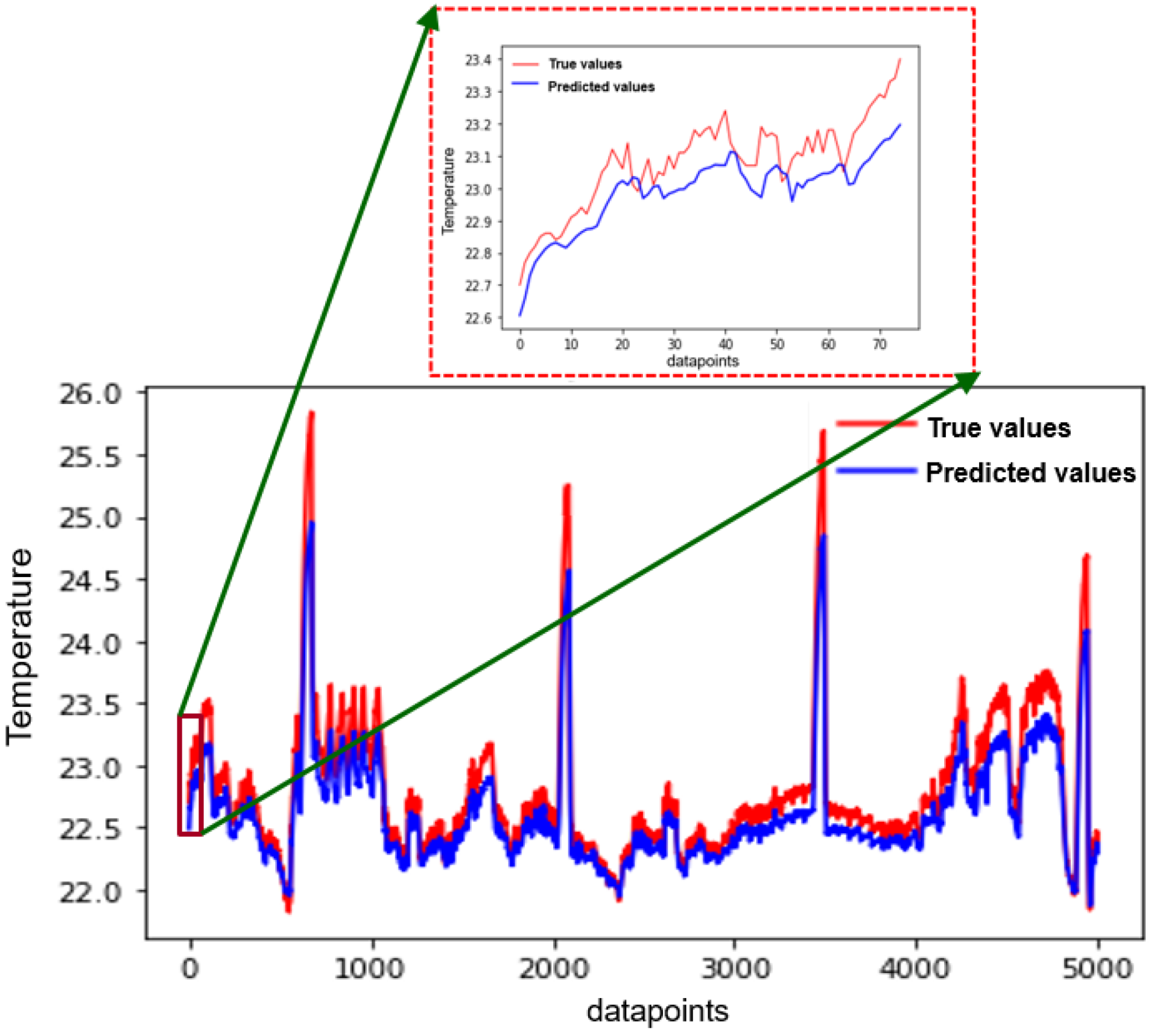
| Frequency (MHz) | Region | Channel (Numbers) | Transmission Rate (kbps) |
|---|---|---|---|
| 868 | Europe | 1 | 20 |
| 915 | USA | 10 | 40 |
| 2450 | Global | 16 | 250 |
| References | MAPE (%) | RMSE (°C) | ||
|---|---|---|---|---|
| LSTM | CNN−LSTM | LSTM | CNN−LSTM | |
| [14] | 2.004 | 2.000 | 0.579 | 0.521 |
| [18] | 0.024 | − | 0.528 | − |
| [19] | 0.906 | − | 1.237 | − |
| [20] | 8.700 | 10.511 | 0.052 | 0.071 |
| [21] | 0.349 | 0.098 | 0.611 | 0.125 |
| This study | 0.180 | 1.370 | 0.042 | 0.117 |
Disclaimer/Publisher’s Note: The statements, opinions and data contained in all publications are solely those of the individual author(s) and contributor(s) and not of MDPI and/or the editor(s). MDPI and/or the editor(s) disclaim responsibility for any injury to people or property resulting from any ideas, methods, instructions or products referred to in the content. |
© 2025 by the authors. Licensee MDPI, Basel, Switzerland. This article is an open access article distributed under the terms and conditions of the Creative Commons Attribution (CC BY) license (https://creativecommons.org/licenses/by/4.0/).
Share and Cite
Sung, G.-M.; Kohale, S.D.; Chiang, T.-H.; Chong, Y.-J. An Artificial Intelligence Home Monitoring System That Uses CNN and LSTM and Is Based on the Android Studio Development Platform. Appl. Sci. 2025, 15, 1207. https://doi.org/10.3390/app15031207
Sung G-M, Kohale SD, Chiang T-H, Chong Y-J. An Artificial Intelligence Home Monitoring System That Uses CNN and LSTM and Is Based on the Android Studio Development Platform. Applied Sciences. 2025; 15(3):1207. https://doi.org/10.3390/app15031207
Chicago/Turabian StyleSung, Guo-Ming, Sachin D. Kohale, Te-Hui Chiang, and Yu-Jie Chong. 2025. "An Artificial Intelligence Home Monitoring System That Uses CNN and LSTM and Is Based on the Android Studio Development Platform" Applied Sciences 15, no. 3: 1207. https://doi.org/10.3390/app15031207
APA StyleSung, G.-M., Kohale, S. D., Chiang, T.-H., & Chong, Y.-J. (2025). An Artificial Intelligence Home Monitoring System That Uses CNN and LSTM and Is Based on the Android Studio Development Platform. Applied Sciences, 15(3), 1207. https://doi.org/10.3390/app15031207







